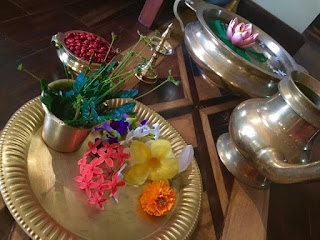I have never written about a place where I have not been to physically. Then why should I write this now ? I dont know I really dont know and am just an instrument in thy hands. Aum Sri Matre Nama:
This was an urge to write and share. Since i have not visited this place, I had to do a lot of researches on the pertinent subject. I have tried my level best to bring in the facts in front of you from various reliable sources too. Some of my friends also helped me and shared unknown aspects about the temple. It was a journey which was beyond my control. I have just compiled the things which I got from various websites, videos and folkalore. Pictures courtesy Internet.
Thank you and courtesy to all. Humble Pranams to my Gurparampara.
This is a must visit place I feel.
This is a must visit place I feel.
The Chennakeshava
Temple, (Chennakeshava meaning handsome keshava) of Belur, is a 12th-century
Hindu temple dedicated to Vishnu situated in the Hassan district of Karnataka
state, India. It was built by King Vishnuvardhana on the banks of the Yagachi
River in Belur also called Velapura, an early Hoysala Empire capital. The
temple was built over three generations and took 103 years to finish. It was
repeatedly damaged and plundered during wars, repeatedly rebuilt and repaired
over its history. It is 35 km from Hassan city and about 200km from Bengaluru.
The temple has been
an active Hindu temple since its founding. It is reverentially described in
medieval Hindu texts. The temple is remarkable for its architectural grandeur, mesmerizing
sculptures, friezes and as well for its iconography, inscriptions and history.
The temple artwork depicts scenes of life in the 12th century, dancers and
musicians. There is also a pictorial narration of Hindu sacred texts such as
the Ramayana, the Mahabharata and the Puranas through numerous friezes.
In This particular temple the shrines are
constructed on a SriChakra plat form (star shaped instead of usual cubical
form). One can observe and find the influence of the concept of Srichakra while
designing Temples by the builders of the past. Srichakra represents the dynamic
and scientific principle of Shiva and Shakti. The merging of the two leads to
Enlightenment/ self-realization. Thus these temples act as the structural form
of this fundamental principle of evolution.
The entire structure
is built with soap stones which is supposed to be easy to chisel with so much
perfection. The intricate workmanship includes elephants, lions, horses and
sensuous dancers in various karanams. Indeed, this temple becomes a study
material, inspiration and reference point for students of dancers Artists and
Art Lovers equally around the globe.
Thera are pillars on the outer walls and inside
too each with a bracket figure of dancing girls called madanikas or celestial
damsels. Inspired by Shantala Devi, The Queen of King
Vishnuvardhana. The madanikas are in different poses depicting
various moods representing graceful feminine charm. These figures are finely
proportioned with clinical precision and exceedingly ornamented. some of the popular ones which gain the
attraction of art enthusiasts include the lady with a parrot and the huntress. There
are totally 42 madhanikas, adorn the exterior walls of the temple. Darpana
Sundari (beauty with mirror), “The lady with her pet parrot” (shuka bhashini}
drum dance, Thribhangi Nritya -The Madanika’s dancing style by bending her body
into three parts one from the waist downward, other from the waist to the chest
and another upwards ; most difficult posture to hold.Devadasi Dancer Shantala
the queen with a gem on her forehead is also depiteced as a bracket figure on a
pillar which is inside. Some of them have been vandalized and robbed by
invaders.
The ceiling of the dancing hall, called Shantala Nritya Mantapa, holds a delicate carving of Srichakra, surrounded by the ashtadikpalakas sculpted in Hoysala style.
The ceiling of the dancing hall, called Shantala Nritya Mantapa, holds a delicate carving of Srichakra, surrounded by the ashtadikpalakas sculpted in Hoysala style.
There are many more important sculptures in the sprawling complex of the Temple. Some of them are the Gajasurasamhara (sculpture of Lord Shiva), a sculpture of Ravana, Durga killing Mahishsura and many others.
The Belur temple
complex along with the nearby Hindu and Jain Temples at Halebidu have been
proposed to be listed under UNESCO World Heritage Sites.













